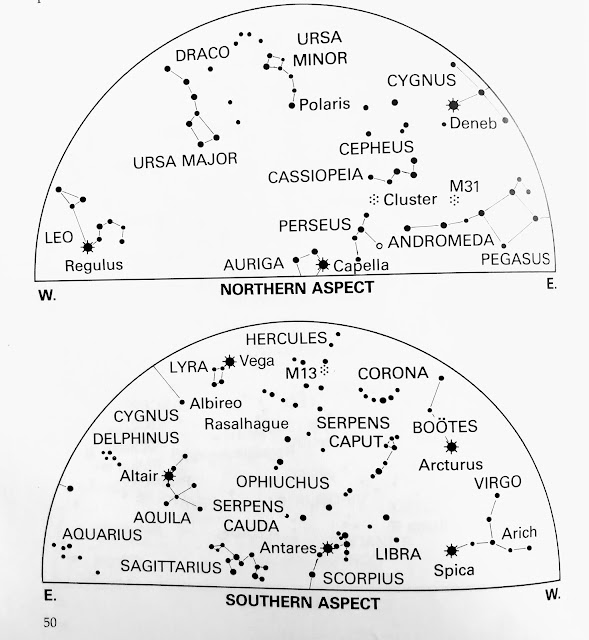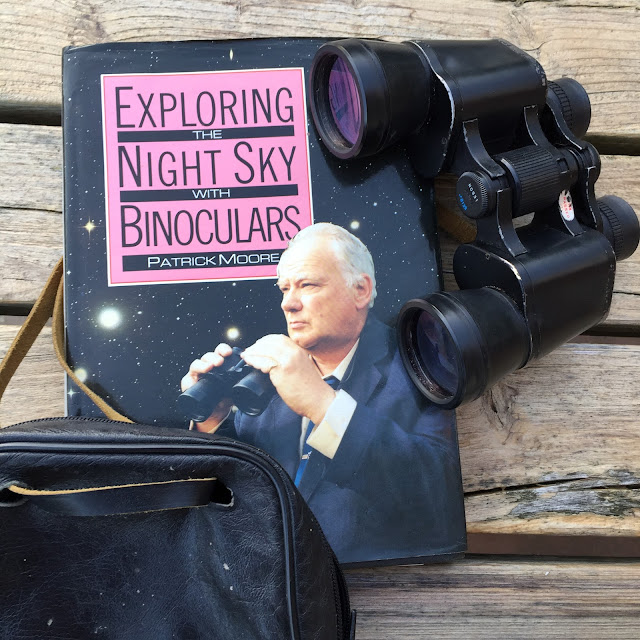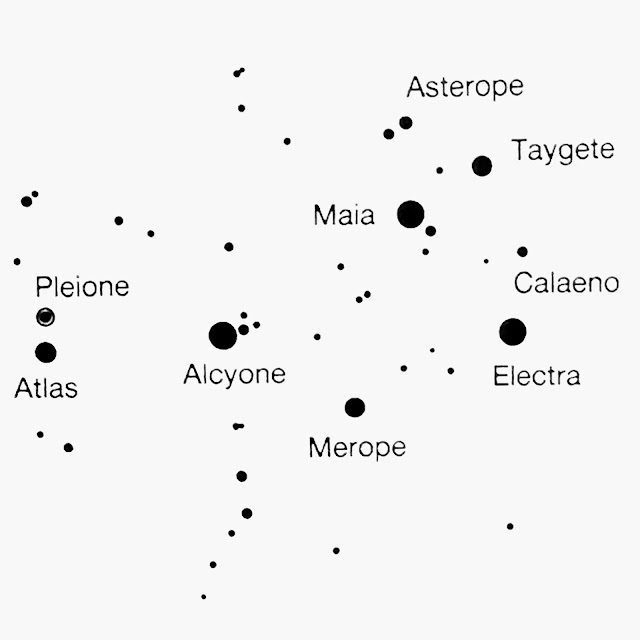Night Sky I
Look right above your head after dark tonight in the UK and in the absence of clouds you’ll see three prominent stars Patrick Moore once named our ‘summer triangle’. On his map Deneb is rather to the north and Altair and Vega rather to the south. I find these a reassuring sight last thing on a clear night, evidence the summer season’s here, in Britain at least. With binoculars you can trace the star family shape or constellation of each bright star: Deneb in the Swan (Cygnus), Altair in the Eagle (Aquila) and Vega in the Lyre (Lyra).
50 years on from Apollo 11 the Moon is as big a draw as ever to amateur astronomers such as myself. Full moon isn’t the best time to take out the binoculars, there’s more contrast and ridges visible in earlier quarters as it waxes and wanes. Best viewing is near the ‘terminator’, the line dividing lit and unlit portions. Since the Apollo missions we’re aware of the dark grey colour of lunar rocks. This makes the moon’s brightness the more remarkable since only 7% of the sunlight that impacts is reflected. If the moon had clouds like Venus it would be over ten times brighter.
How do you find north looking at the night sky? You find so-called Ursa Major (the Great Bear) known to us as the Plough or in America the Dipper. Trace out from the right side of the dipper pan into space and the first bright object is Polaris or the Pole Star. This is always situated due north. When I was working in Guyana Polaris was just above the horizon. In Haywards Heath it's angled at 51 degrees from the horizon which is our latitude. From the Equator to the North Pole, the angle of Polaris above the horizon is a measure of latitude. This means if I ever visit the North Pole it’ll be over my head!
The bright planet Jupiter rules the night sky from dusk in August. Since planets reflect sunlight they’re brighter than most stars and Jupiter is second to planet Venus in its brightness. 25 years ago my son David and I viewed the solar system’s ‘event of the millennium’, Comet Schomacher’s impact on Jupiter in 1994. We saw two dark spots clearly visible on the planet through our telescope from the Vicarage garden at St Luke, Coventry. It was really exciting watching these come and go over the inside of a week dependent, as astronomy is, on the weather.
With the English weather you often need to move quick to catch a clear night sky. This is where binoculars win over telescopes even if they don’t magnify as much. Binoculars are two small telescopes side-by-side so you can use both eyes and get wider 3D vision than you get from any size of telescope. Though I’ve had telescopes most of my astronomy is done with the naked eye or binoculars when I see an inviting night sky and have half an hour to spare. A most important feature in my picture is the safety cord to put your binoculars round your neck and stop them crashing to the ground!
Straight lines in the sky catch the eye! I’m immediately drawn to the ‘Three Mary’s’ as South Americans call the belt of Orion the Hunter. In England Orion stands tall. When I worked in the Caribbean he was appropriately more laid back - the Amerindians called him the Powis hunter and see these birds in front of him. The way we describe the sky differs across the world but astronomers recognise 88 star patterns or constellations named in Latin. Orion, hunter in a Greek myth, is easiest to recognise through his belt, three stars in a line. My knowledge of the night sky was first built from following the line of Orion’s belt to right and left.
With binoculars you can see some coloured stars, as in Orion constellation where reddish top left Betelgeux contrasts with sharp white Rigel diametrically opposite below the three star belt. Betelgeux is a red supergiant star as large as our earth’s orbit around the sun. Rigel is 60,000 times brighter than our sun. To find an orange-red star scan binoculars to the right of Orion’s belt where the first bright star you catch is Aldebaran 65 light-years away and 100 times brighter than the sun. Move your binoculars to the left of Orion’s ‘three Mary’s’ belt and you get dazzled by Dog Star Sirius, the brightest star in the sky.
Even with binoculars you can see this M42 nebula. If you go to constellation Orion’s belt you can spot his ‘sword’ hanging down and within it a cloudy area. This colour picture of M42 was taken by the Hubble telescope above earth. Nebulae are vast interstellar clouds of dust and gas in which new stars come to birth, nurseries for suns! I’m always awed when I scan Orion’s sword and ponder a binocular view of a nebula unrivalled across the night sky. M42 is 1000 light years away from us i.e. the light striking our eyes from it left M42 before the Norman Conquest in 1066.
I remember how my early random scanning of the night sky alighted again and again on a star arrangement which was attractive and somehow different, the Pleiades. Even the naked eye can distinguish the boldest depicted seven stars in the diagram. Binoculars can see dozens of stars. You find the Pleiades star cluster by going right from the belt of Orion and skipping over the orange star Aldebaran. Whereas thee night sky contains impressive patterns built from stars - constellations - those stars aren’t linked save in their coincidental structured appearance to us on earth. In clusters stars belong and aren’t accidentally grouped.










Comments
Post a Comment